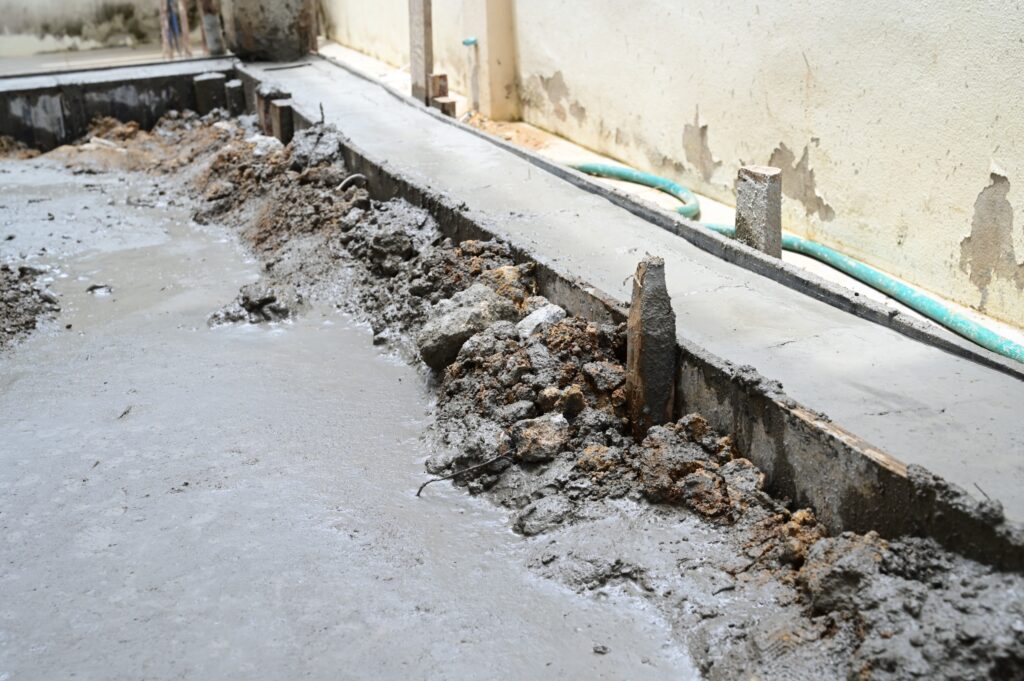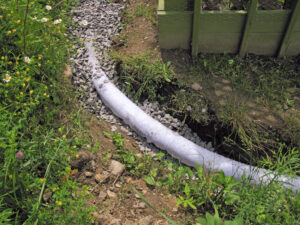A French Drain is an effective waterproofing solution that helps manage and divert groundwater away from specific areas like gardens, foundations, or the lower levels of a house.
The system entails a perforated pipe laid in a ditch filled with gravel, which allows water to flow through the small rock fragments and to the pipe. It is then carried away to an assigned area. The main function of the system is to prevent water buildup, which can then lead to soil erosion, waterlogged lawns, and basement flooding.
When looking to enjoy these benefits by setting up this kind of system, one question you may have is the number of days it will take you to do the full installation. This article answers this question by explaining the different phases and the time they take.
Planning and Preparation

Basement waterproofing
The first step entails doing an analysis of your property and identifying those areas that may require waterproofing interventions. At most times, these will be areas that have previously experienced water accumulation. The stage involves coming up with a detailed site plan, marking the layout, and calculating the slope to ensure effective drainage. Other activities done during this step include securing permits, obtaining utility lines, and sourcing the needed materials. Examples of materials needed during this project include gravel, perforated pipes, and geotextile fabric. Sourcing such things can require extra work, especially if special orders are needed. However, this time can be significantly reduced with proper planning preparation.
Digging the Trench
The duration taken to dig the trench greatly depends on the length, depth, and width of the channel to be dug. It also depends on the layout of your property and your specific drainage needs. The method used to dig also has a huge impact on the span taken. For instance, digging by hand using a shovel will take more time compared to when using power tools or renting a trenching machine. However, it could require you more time to hire these heavy-duty tools so you have to plan well ahead of time. The presence of obstacles on your property like buried utilities, tree roots, or existing landscaping features could also complicate the digging process.
Laying the Drainage Pipe and Gravel
Once the ditch digging is done, the next thing entails lining the landscape fabric to deter soil from blocking the system. The next thing entails adding a layer of gravel, an action that is then followed by placing the perforated pipe in position and ensuring that it is well-sloped to help promote water flow. The pipe is then surrounded with more gravel, which helps direct water into the pipe while filtering out any debris. A lot of attention to detail is required during this stage to help promote proper gradient and ensure the pipe stays in place for the next step, which is backfilling. The quantity of gravel required, precision needed, and labor required are factors that depend on the size and sophistication of the project.
Backfilling and Finishing
The last step that comes into play when setting up is backfilling and finishing. These too can affect the number of days it takes to do the installation. Once the drainage pipe and gravel have been properly laid, the trench is backfilled with soil. It is good to note that the soil has to be perfectly compacted to prevent settling over time. In addition, this phase is not just about backfilling but also restoring the landscape to its original or improved condition. Therefore, for those areas that had vegetation, it makes sense to do replanting all over again. These extra tasks could add more time and effort to the establishment work.
Average Time
The average setting-up time depends on a couple of factors as aforementioned. However, you can expect to spend anywhere between 2 and 3 days for small projects, 3 to 5 days for medium projects, and over 7 days for large ones.
A French Drain is quite beneficial for homeowners because it ensures effective water management, prevents basement waterproofing, and protects the landscape. The time needed to set up this piece of infrastructure varies on factors like the size of the project, soil conditions, and if it is a DIY project conducted by experts. Small projects could take a day or two while large ones could take over one week. Proper planning and working with experts is the only way to ensure that the installation is as seamless as possible.



